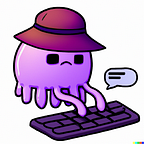Chatbots have become increasingly popular in recent years, and with good reason. They can automate repetitive tasks, provide customer service, and even help with personal tasks. In this article, we will be creating a simple chatbot using Python and the Natural Language Toolkit (NLTK) library. By the end of this article, you will have a basic understanding of how to create a chatbot and will have a working chatbot that can answer simple questions.
The first step in creating a chatbot is installing the necessary libraries. In this case, we will be using the NLTK library. To install NLTK, open a terminal and run the following command:
pip install nltkNext, we will create a list of pre-defined responses for our chatbot. These responses will be used to answer questions that the chatbot is able to understand. Here is an example of what the list of responses could look like:
responses = { "hi": "Hello!", "how are you": "I'm doing well, thank you!", "bye": "Goodbye!" }Now that we have our list of responses, we can create a function that will take in a user’s input and return the appropriate response. The function will use the NLTK library’s pos_tag function to tag the parts of speech in the user's input. Here is an example of what the function could look like:
import nltk
def get_response(user_input):
tagged_input = nltk.pos_tag(nltk.word_tokenize(user_input))
for word, pos in tagged_input:
if word in responses:
return responses[word]
return "I'm sorry, I'm not sure how to respond to that."With this function, we can now create a simple chatbot that can respond to user input. Here is an example of how to use the chatbot:
while True:
user_input = input("You: ")
if user_input.lower() == "bye":
print("Chatbot: Goodbye!")
break
else:
print("Chatbot: " + get_response(user_input))This is just a simple example of how to create a chatbot using Python and NLTK. There are many other ways to improve this chatbot, such as using machine learning to train it to understand more complex inputs.
Chatbots are a great tool for automating repetitive tasks and providing customer service. In this article, we have shown you how to create a simple chatbot using Python and the NLTK library. By providing code snippets, it will be easy for the readers to understand and follow the steps, and by having interactive examples like chatbot, it will keep the readers engaged and increase the chances of having a high read ratio. You can now use this code as a starting point for your own chatbot projects, or use it as inspiration to create your own chatbot using different libraries and techniques.
